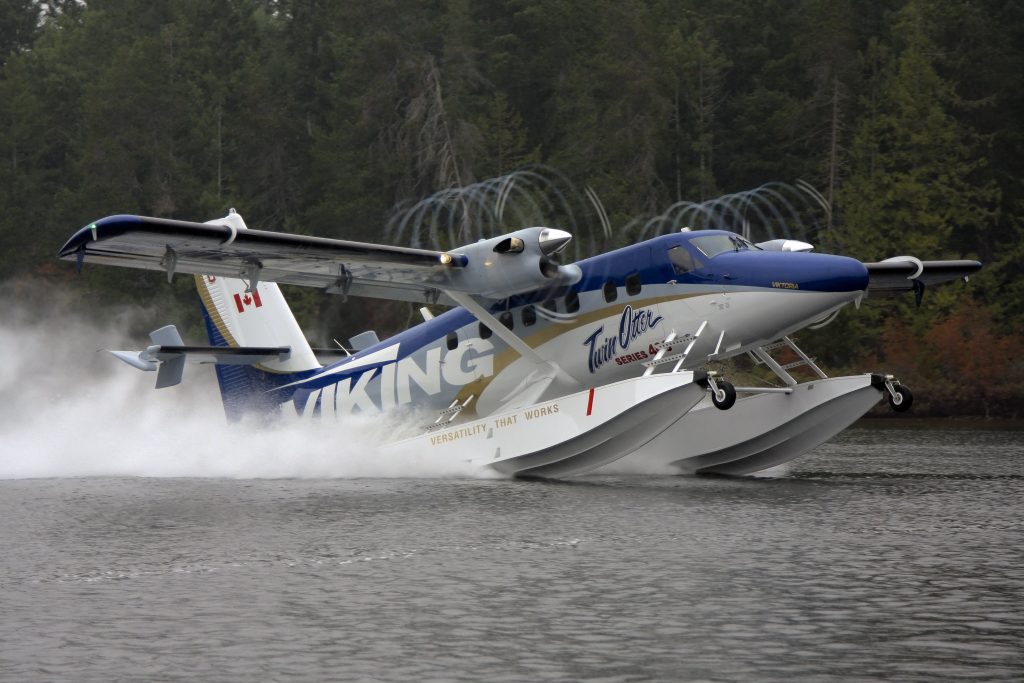Written for Aviation Week & Space Technology – September 1, 2014
The iconic de Havilland Canada DHC-6 Twin Otter enjoyed an initial 20-year production run before the final plane rolled off the Downsview, Ontario assembly line in 1988. It took almost another 20 years until Viking Air launched the upgraded Series 400 Twin Otter, responding to a market that couldn’t find a replacement for the legacy STOL utility plane. But Viking believes the new version has found its place.
Production is now stable at one new aircraft every ten working days, according to Dave Curtis, Viking Air President and CEO. With over 50 aircraft delivered and a total order book above 100, Curtis acknowledges that it’s been a challenging ramp-up to full production. “We’ve sorted out our supply chain both internally and externally, and the number of production issues that I get personally involved with have gone quiet. Now I get to focus on building the company.”
Viking has been supporting the de Havilland Canada (DHC) fleet of DHC-2 Beavers, DHC-3 Otters and legacy Twin Otters for decades, with parts, engineering and MRO services. In 2006, leveraging their knowledge and experience with these Canadian utility aircraft, Viking acquired the Type Certificates from Bombardier Aerospace for all of the legacy DHC aircraft, from the DHC-1 Chipmunk to the DHC-7 Dash 7. The decision to restart production of an updated Twin Otter came after discussions with operators worldwide, who were clamoring for a replacement aircraft. The Series 400 was launched in 2007, with first delivery in 2010.
Major components are fabricated in Viking’s Victoria, British Columbia plant, and final assembly takes place in Calgary, Alberta. Although the performance of the Series 400 is virtually identical to the Series 300 legacy aircraft, the new Twin Otters have numerous upgrades to the planes’ internal systems, including a Honeywell Primus Apex flat-panel integrated avionics suite. “With the ‘steam’ instruments, there was something like 150 part numbers and 30 vendors. We’re down to 10 part numbers and one vendor,” says Curtis. “But certifying airplane software is not a quick process. We did Phase 1 for the basic certification of the aircraft. We’re now deep into Phase 2, which will include a lot of bug fixes, and features such as synthetic vision and a digital autopilot.”
There are concerns that flat-panel displays and modern avionics aren’t robust enough for seaplane and unimproved airport duty. Curtis disagrees: “The displays are out of the U.S. M1 Abrams main battle tank. We’ve never had a problem with them,” he says. But the system has had its teething pains. “We’ve had an issue with a graphics card that seemed to have its challenges. It’s a Line Replaceable Unit (LRU). The decision to use the Honeywell system was driven in part by that company’s worldwide support and warranty.
Series 400 aircraft have been delivered to new and legacy Twin Otter operators, including the U.S. Army, the Peruvian Air Force, Malaysia’s MASwings, and utility operators worldwide, such as Swiss-based Zimex. Trans Maldivian Airways, the world’s largest operator of seaplanes, has added three Series 400s to its fleet of over 40 Series 300 planes.
Air Seychelles is flying three, wheel-equipped Series 400s, with a fourth due in 2015. Serving airstrips in the 155-island nation in the Indian Ocean, the airline is updating its Series 300s. On the conversion for the airline’s pilots from the legacy aircraft, Captain Granger Narara, General Manager, Operations, for Air Seychelles, says “The transition from the Series 300 to 400 is very easy. The handling characteristics are exactly the same, the only difference is the flight instruments and avionics.” And what’s been Air Seychelles’ experience with the new Honeywell avionics suite? He adds that in terms of operational reliability, “even with the high humidity and saline environment that we operate in, we have had minimum issues.”
Curtis recognizes that the major competitor for the Series 400 is the fleet of 600-odd legacy Twin Otters still in service. He also acknowledges the work being done by Ikhana to revive the legacy aircraft, which benefits Viking on the support side of the equation. “Ikhana is commercially linked to Viking, they’ve used our engineering data, and we derive revenue from it,” says Curtis. Other competitive twin-engine aircraft include the Harbin Y12, PZL M28, Let L-410 and the Dornier 228. But on floats, Curtis says “it’s either the single-engine Cessna Caravan or the Twin Otter.”
Viking is targeting emerging markets such as Brazil, India & China, and has had some success in Russia with nine aircraft sold and four delivered. Curtis believes that Russia “could be a 200 aircraft market over 10 years, for us..” Chinese certification of the Series 400 is in process, and Curtis sees that country as a huge opportunity. Of the over 800 legacy Twin Otters produced by DHC, only a handful were delivered to China. “I’ve got the world’s best seaplane, and interest from Chinese customers who are looking to link a ‘Tier 2’ city-pairing of 20 million people by seaplanes.”
This points to what Curtis sees as constraining Viking’s growth. “I can produce the airplanes, but I can’t magically produce safe, trained crews,” he says.
To accelerate the training process, Viking and its Victoria-based flight training partner, Pacific Sky Aviation, recently contracted for the world’s first Level D seaplane simulator from Montreal-based TRU Simulation. It is planned to be operational in early 2016.
